Growing Black Beans [Your Complete How-to Guide]
Welcome! This article contains affiliate links, meaning I get a commission if you decide to make a purchase through my links, at no extra cost to you.
The black bean is commonly native to the Americas and a staple in Mexican, Cajun, and Creole cuisine. Black beans are also delicious cold, pureed, or baked! Wouldn’t it be nice to have these versatile legumes thriving in your backyard’s garden patch?
Black beans have pole and bush varieties. They grow best in warm temperatures during late spring with soil temperatures of at least 60°F to 70 °F. Black beans take 90 to 140 days to yield a harvest. Pole varieties need support to grow vertically, use a trellis or pole to stake the plants.
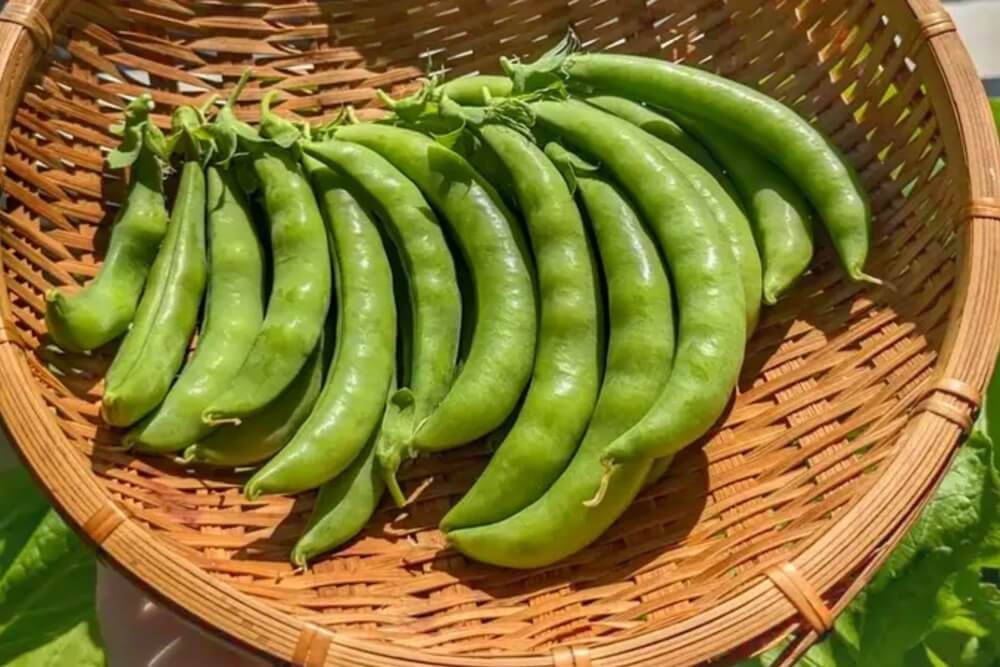
Not many crops are easier to grow and more rewarding for the effort than black beans. So, let’s look at the complete “how-to guide” for common black beans.
How to Grow Black Beans
- Choose your black bean variety. There are many types of black beans available as determinate (bush) and indeterminate (pole) varieties.
- Choose a location. Black beans prefer a full-sun position (at least 5-6 hours of full sun).
- Prepare your soil. Black beans prefer loose, well-draining soil and a pH of 6 – 6.5. Use an at-home soil test to check your soil.
- Soak your seeds before planting. Dried beans have a better chance of successful germination if you soak them overnight.
- Plant your seeds once all signs of frost are gone. Black beans germinate best in soil temperatures of at least 60°F to 70°F. Around late spring is usually best to ensure four to five months of consistently warm weather.
- Plant the seeds about 1″ deep with the eyes facing downward, with 3-4″ of space between them or pole varieties and 6-8″ of space for bush varieties.
- Cover seeds with a thin layer of soil and water gently. Germination takes 10-14 days.
- Mulch the soil around your black bean plants.
- Protect the plants from pests and provide a trellis for support.
- Water your plants regularly when the top 1″ of soil is dry. You can check the soil’s moisture level with your finger.
- Harvest when the pods turn yellow and dry. Harvest usually takes 90-140 days, depending on the variety.
We’ll go into more detail on growing black beans below!
Black Bean Varieties
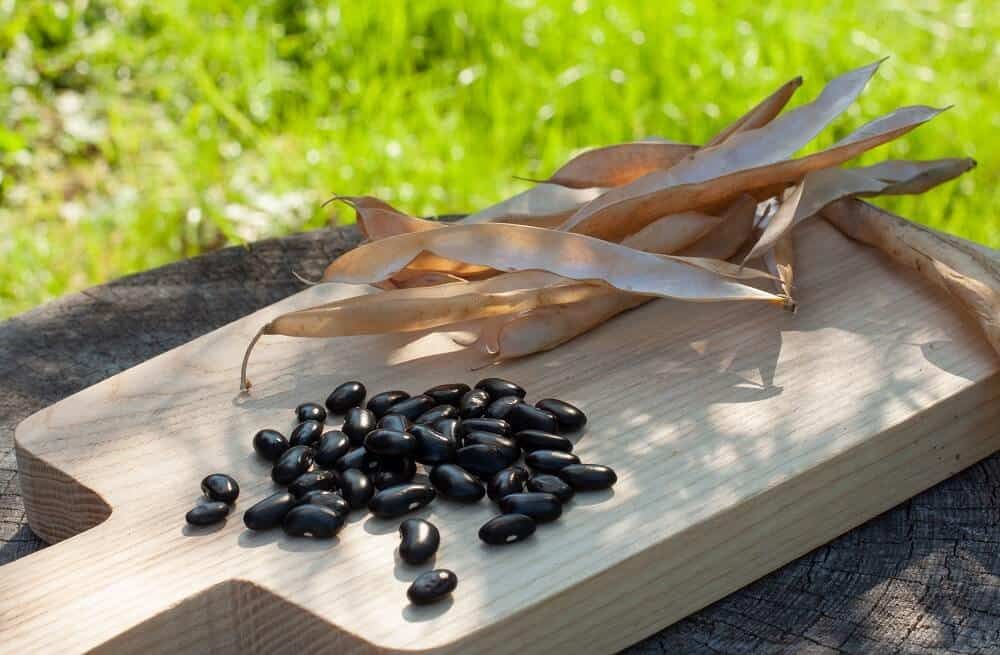
The original black bean plant is a vine with a twining habit similar to today’s pole beans. However, black beans are now available as determinate (bush) and indeterminate (pole) varieties.
The best variety for your garden entirely depends on your preference. Of course, neither one outweighs the other, but there are vast differences that might cause one to attract you more than the other variant.
| Black Bean Bush Variety | Black Bean Pole Variety | |
|---|---|---|
| Height | 2 feet or less. | 3 feet or taller. |
| Harvesting | Easy to harvest. Harvest the beans all at once. | Hard to spot between the masses of foliage. Harvest throughout the growing season. |
| Determinacy | Determinate. | Indeterminate. |
| Yield | Yield all cops at once | Yields throughout the season. Higher yielding per square foot. |
| Maturity | As little as 50 to 60 days. | 90 to 140 days. |
| Size | Smaller and shorter pods generally. | Sizable and longer pods generally. |
| Selection | Dried beans are mostly bush types. | Heirlooms are only available in pole. |
| Quality | Many gardeners say that the flavor is blander in comparison to the pole variety. | Many gardeners say that the flavor is more intense in comparison to the bush variety. |
When to Grow Black Beans
Black beans thrive in warm climates with soil temperatures of at least 60°F to 70°F for successful germination.
Do not plant Black beans until all signs of frost are gone; around late spring is usually best to ensure four to five months of consistently warm weather.
Due to their shallow roots, black beans do not do well with transplanting. So, if you have a shorter growing season, consider warming up the soil with black plastic mulch.
How Many Black Beans Should I Plant?
Generally, it takes 8 to 12 black bean plants to produce a generous amount of black beans for a single person.
So, if you are planting black beans for consumption, 12 plants per person is ideal. However, if you grow your beans to preserve them, 36 plants per person will allow you to have fresh beans to use and enough to store later.
When to Harvest Black Beans
Your black beans are up and ready to harvest as soon as the bean pods on your bean bushes or poles have turned yellow and dry.
Black beans typically take anywhere between 90 to 140 days to harvest after planting, varying from cultivars.
To harvest, use scissors to cut away the ripe pods from the bean plant. Harvest your bush beans all at once when mature; you can even remove the whole plant from the soil. However, pole varieties develop throughout the growing season.
So, be sure to check and harvest them when ready – check frequently!
Read More – Soil Testing and Nutrient Management for Your Garden!
How to Grow Black Beans Step-By-Step?
To successfully grow black beans in your veggie garden, follow these simple steps:
Step 1: Choose a Location to Plant Black Beans
Similar to most other dry bean varieties, black beans do not like transplanting, so it’s better to plan to sow them right out into your garden soil. (Their roots are too shallow to transplant most of the time.)
Choose a location ensuring full sun (at least 5 to 6 hours of full sun) and without shade obstructions like other trees and plants.
Step 2: Prepare Your Soil Before Planting Black Beans

Ensure that you have loose, well-draining soil to prevent root rot and water-logged garden soil.
Be sure to test the soil’s pH and make necessary corrections before hastily planting your black beans. Home pH test kits are user-friendly and readily available in most garden centers.
Black beans thrive best in soil with a pH between 6 and 6.5.
- If your soil pH is high (alkaline soil), consider adding sulfur.
- If your soil pH is low (acidic soil), consider adding lime.
In addition, beans ideally prefer fertilizer with low nitrogen content. Therefore, consider adding organic fertilizer to the soil before planting black beans in a location where crops grew previously.
Furthermore, you can also add a legume inoculant (a common additive for legumes and peas, containing bacteria that feeds the soil and kickstarts the nitrogen production in the plant) to boost the growth of the seedlings.
Here's an excellent cover crop inoculant for peas, lentils, and beans. It has loads of rhizobia bacteria that help boost nitrogen replenishing.
Note: if you cannot change the pH of your soil, consider growing your beans in raised beds or containers.
Step 3: Purchase Your Dried Black Bean Seeds
Decide whether you prefer planting black bean poles or bush varieties and purchase the type of your choice.
-
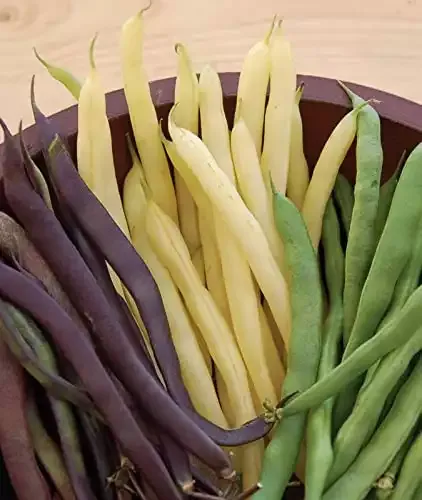
$6.69$6.07 ($3.04 / Ounce)Get More InfoThese royal burgundies and mellow yellow beans taste delicious, and they're also tiny. The plants only grow around 15-inches tall! They flourish best with full sun and produce beautiful plants with four-inch bean pods. You'll also love the colorful harvest - it will keep your eyes and your tummy satisfied!
PAID LINK - We may earn a commission if you make a purchase, at no additional cost to you.
04/16/2024 05:30 pm GMT -
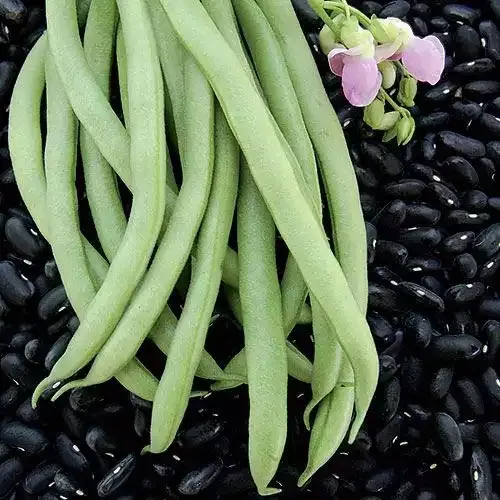 $6.59 ($0.13 / Count)Get More Info
$6.59 ($0.13 / Count)Get More InfoBlack Valentine is a breathtaking black bean heirloom variety. Black Valentine is a bush variety - so you don't need a pole or trellis. Each pack contains around 50+ seeds.
PAID LINK - We may earn a commission if you make a purchase, at no additional cost to you.
04/18/2024 06:42 am GMT -
 Get More Info
Get More InfoScarlet Emperor plants produce breathtaking orange flowers - and black beans! They love the full sun and can grow over 10 feet tall. That's not a typo. These black bean heirlooms grow upwards of ten feet!
PAID LINK - We may earn a commission if you make a purchase, at no additional cost to you.
-
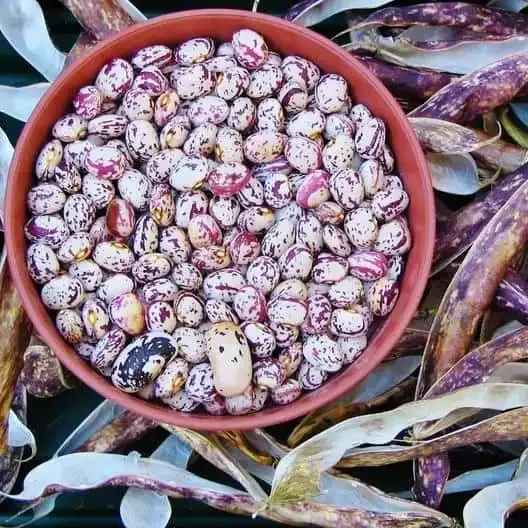 Get More Info
Get More InfoBorlotto beans are one of our favorite cream-colored bean cultivars. They're a lovely cream color! They're perfect for cooking, snacking, canning, and storing. They're also easy to grow if you have lots of sunlight.
PAID LINK - We may earn a commission if you make a purchase, at no additional cost to you.
Step 4: Pre-Soak Black Beans Before Planting
Dried beans have a much better chance of successful germination if you soak them overnight. Therefore, soak your bean seeds overnight in cool, clean water before planting them.
Step 5: Plant Your Black Bean Seeds
Pole black bean varieties require 3 to 4 inches of space between them, whereas bush varieties need 6 to 8 inches between each plant.
Plant seeds in about one-inch-deep holes. Be sure that the eyes are facing downward when you plant the seeds. In addition, bean seeds generally germinate successfully, so you do not need more than one seed per hole.
Cover the black beans with a thin layer of soil and water lightly to encourage germination
Step 6: Water Your Black Beans
Lightly water your seeds after planting, and once the seeds germinate, only water the plants once the soil is mostly dry.
Black bean seeds take 10 to 14 days to germinate!
Step 7: Mulch the Soil and Black Bean Plants
Mulching the soil will aid in moisture retention, warm soil conditions, and weed growth prevention.
Once your black bean plants are a couple of inches tall and sprout several leaves (2 to 3 weeks), start to mulch your plants. However, keep mulch away from the plants’ stems to promote aeration.
Organic mulch like straw or hay is the best mulching option to use.
Step 8: Protect and Support Your Black Bean Plants
Frequently check your soil and bean plants for pests like spider mites and aphids. Rise the bean plants using a hose, use neem oil as an organic pesticide to kill the bugs, or consider introducing beneficial pests like ladybugs into your garden.
If weeds are growing between your bean plants, remove them. However, be cautious − black beans have a shallow root that may come out if you weed around the plant without being careful.
If you went with a pole variety, the bean plants would need support. Put a trellis or pole into the ground right next to the small plants without damaging the vines or roots.
Your vines may naturally incline to grip the pole, but you will need to tie the vines to keep them in an upright position. Consider using a soft twine or cloth to strap the vines in place gently.
Each trellis needs to be at least 3 feet high.
Tip: put the trellis or pole in place before or during planting to ensure no root or vine damage occurs.
Step 9: Harvesting Your Black Beans
When the black bean pods turn yellow and dry, it’s time to harvest your black beans. If you choose to harvest the beans while still green, you must let them dry out completely before removing the bean inside.
Bush variety black beans can take as little as 50 to 60 days to reach maturity. All pods will ripen at the same time, so harvesting happens simultaneously. You can even remove the entire plant.
However, pole varieties take 90 to 140 days to mature, and harvesting is done throughout the growing season as pods mature at different times.
To harvest your black bean pods, use a pair of scissors or pruners to cut the mature pods. Then, open one of the pods to ensure that the beans are ripe and ready for harvest. Or, bite down on one of the pods−it will leave no bite marks if the pod is completely dry.
Tip: It’s best to harvest in dry weather. So, if there is a forecast of rain and the beans are almost mature, consider removing the whole plant of bush varieties, hanging it upside down, and leaving it to dry.
Lastly, remove the beans from the pods and spread them on a flat surface to dry before cooking or storing them.
A wooden table or dry countertop in a cool place is the perfect spot.
Read More – Here’s the Ultimate Guide to Stocking Your Homestead Pantry – With Beans, and More!
Can You Achieve a Continuous Black Bean Harvest?
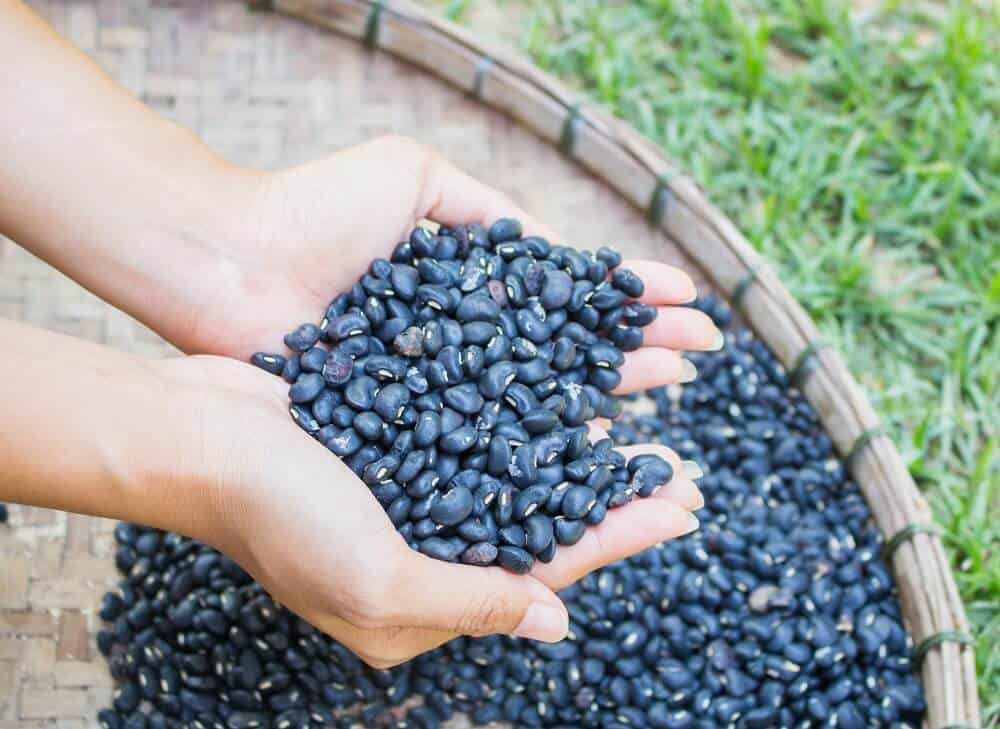
Bush beans are developed to produce heavily over two weeks and sometimes bear a limited second harvest. So, to harvest all your beans at once, plant bush beans.
But, for a more continuous yield, plant pole beans using a trellis for support. Pole beans generally continue to bear pods over a 6-to-8-week period.
Some gardeners have found that pruning your beans improves the second harvest picking. Substantially! First, prune one-third of the plant from the main stem, including the side branches, and apply a liberal compost.
Growing Black Beans in Containers
If you’re a container garden enthusiast, be sure to add black beans to your veggie addition.
Here’s how:
Pick a Suitable Container for Growing Black Beans
I suggest using a container at least 12 inches deep and wide. This size container will ensure enough room for roots to develop correctly and provide enough distance between plants.
Plastic containers are a great option. They retain heat and moisture better than terracotta and metal containers.
Ensure that the container has several drainage holes at the bottom to drain excess water from the pot.
Pick a Suitable Black Bean Variety for the Container
If you have a small growing area, I suggest planting the bush variety. However, if you have a larger growing space, you can choose between the bush and pole variety.
Note that your pole variety will require support like poles, trellis, or a tomato cage to help encourage vertical growth.
Sterilize and Prepare the Container Before Planting the Beans
It’s essential to ensure that the container is pest-free before planting your black bean seeds. First, sterilize the container with diluted bleach (10-parts water: 1-part bleach). Then, remember to rinse the container properly before planting your seeds.
In addition, to prepare the container− add well-draining potting soil with a 6 to 6.5 pH. Finally, I suggest adding organic compost and legume inoculant to the potting soil mix.
Tip: Add a layer of stones to ensure adequate drainage for your soil.
Add Support for Pole Varieties
If you opt to grow black bean pole varieties, you’ll need to support them properly.
You can put the pole or trellis in the container or the ground close to the container. Your support needs to be at least 3 feet tall.
Note: It’s best to add the support before planting to damaging seeds and roots
Plant, Grow and Harvest Your Black Beans in a Container
Remember that black beans have shallow roots and prefer not to be disturbed while growing. So, I suggest planting the bean seeds directly into the container.
Follow the requirement mentioned above in how to grow black beans step-by-step.
Read More – Can You Grow Blackberries and Raspberries Together?
Growing Black Beans – FAQs
Growing black beans means you’ll have plenty of protein and fiber! But – it also means you’ll likely encounter a few black bean snags when adding them to your garden.
No worries – we have a ton of experience growing black beans. We want to share our best black-bean-growing insights below.
We hope these black bean answers help!
Why Do Black Beans Split While Growing?
Beans are dicots, meaning that each seed splits into two sections, attached by a tiny, thin area. When the central sprout emerges and straightens, the two cotyledons split or break apart and turn sunwards, revealing the first two plant leaves.
How Do Black Beans Grow?
The black beans germinate – and the plants start from there. In other words, plant dried black beans rather than seeds. You can plant black beans in the ground or containers. Usually, we have much better luck sowing them directly into the soil.
How to Sprout Black Beans?
Follow these five simple steps to sprout black beans:
- To grow black beans, place them in a quart-size sprouting jar. Fill the jar, three-quarters full with water. Cover with a mesh sprouting lid or screen.
- Soak the black beans for at least eight hours.
- Drain and rinse the black beans.
- Repeat the rinsing and draining process 3 to 4 times per day until sprouting occurs and reaches desired length and taste.
- Drain the beans for a couple of hours before cooking or storing them in an air-tight container.
What Do Black Beans Look Like When Growing?
While growing, black beans look very similar to other bean plants. They have trailing bright green vines and trifoliate leaves with spade-shaped leaflets. It’s tough to see the black beans until they’re ready to harvest.
Can You Grow a Plant From a Black Bean?
100% yes! In theory, at least. You plant dried black beans rather than seeds. However, black beans rarely germinate after two years since harvest.
Is It Hard to Grow Black Beans?
Black beans are incredibly easy to grow as long as they have at least six hours of total sun exposure and well-draining soil. They appreciate more than six hours of sunlight – but they will settle for six.
Do Black Beans Need a Trellis?
Black bean bush varieties seldomly need a trellis as they only grow a maximum of 2 feet high.
However, pole varieties that grow higher than 3 feet need a trellis or other means of support to keep them growing vertically.
Can You Grow Black Beans From the Grocery Store?
In theory, yes. Black beans from the grocery store can germinate; however, not all black beans for the grocery store will still be viable.
Some seeds may be too old to germinate well, while others might be irradiated and won’t sprout at all.
Read More – How Long Does it Take for Tomatoes to Grow?
Conclusion
There you have it! The complete how-to guide to growing staple black beans.
Remember to choose the variety that best suits your available space and needs.
Bush varieties are great for small spaces with a once-off harvest; pole varieties are better in larger areas and produce pods throughout the growing season.
If you have questions about growing black beans – don’t hesitate to ask.
We love hearing from you, and we’re happy to help.
Thanks for reading.
And – happy planting!
PS – Try These Black Bean Growing Resources!
We almost forgot.
More black beans!
We’re obsessed with growing black beans and think that homesteaders everywhere can benefit from more fiber.
And – more protein!
(Not to mention yummy taco and veggie dishes.)
That’s why we put together a few additional resources – perfect for growing black beans. Plus other yummy legumes, too.
Thanks so much for reading!
The black bean resources are below.
- How to Grow Black Beans!
- Black Bush Bean Trails! (Beautiful!)
- Growing Beans in Your Home Garden
- Growing Beans – From Sowing to Harvest!
- How to Grow Black Beans?
- Planting Black Beans
- Growing Black Beans in Containers!
- Growing Black Beans – Bush vs. Pole?
- Best Veggies for Growing in Ontario and Other Short-Season Locations!
- Best Vegetables for Growing in British Columbia and Cold Climates!
Thanks again for reading!
And – happy growing!


![How to Dig a Trench for Drainage In 5 Easy Steps! [No More Muddy Yards!]](https://69be7209.flyingcdn.com/wp-content/uploads/2023/01/digging-a-diy-drainage-ditch-and-laying-a-drainage-pipe-working-in-the-raw-earth-768x512.jpg)
![How to Harvest and Grow Asparagus [Complete Growing Guide]](https://69be7209.flyingcdn.com/wp-content/uploads/2019/09/bunches-of-asparagus-bound-with-rubber-bands-768x512.jpg)

![5 Gallon Bucket Garden DIY [+ 30 Most Productive Vegetables to Grow In Buckets!]](https://69be7209.flyingcdn.com/wp-content/uploads/2021/06/5-gallon-bucket-gardening_7131-768x576.jpeg)
![How to Save Pumpkin Seeds for Planting [From Store Bought or Homegrown!]](https://69be7209.flyingcdn.com/wp-content/uploads/2022/08/pumpkin-seeds-for-planting-768x512.jpeg)
